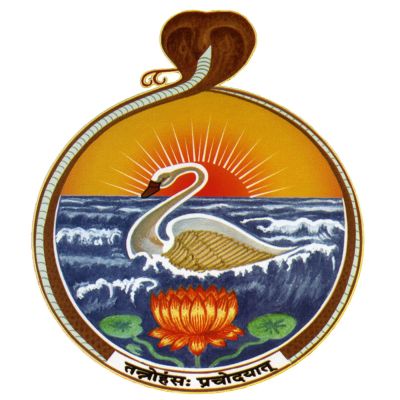Swami Tattwamayananda’s class on Srimad Bhagavad Gita is held at the Vedanta Society of Northern California, San Francisco (founded by Swami Vivekananda in 1900) on Friday evenings in the First Universal Hindu Temple in the West (founded by Swami Trigunatitananda in 1905). Classes are held on Friday night at 7:30 pm. All are most welcome.The Srimad Bhagavad Gita is the most important spiritual classic of Hinduism.Swami Tattwamayananda, currently the Minister of the Vedanta Society of Northern California, San Francisco, (originally founded by Swami Vivekananda in 1900) served in various centers of the Ramakrishna Order in India as editor, publisher, and teacher of Sanskrit, Advaitic texts such as Sri Shankaracharya's commentaries on the 'Prasthanatraya' (the fundamental Sanskrit texts of Vedanta philosophy), Buddhism and Indian philosophy. He underwent traditional training in Hindu scriptures, Sanskrit, Vedic and Vedantic literature for many years, from his early days...
https://www.spreaker.com/show/srimad-bhagavad-gita_1
episode 155: 155 - What is Sannyasa? | Swami Tattwamayananda
The 18th chapter is the longest and is about moksha-sannyasa-yoga. It is also considered as a summary of the previous 17 chapters.
Moksha means liberation from the bondage of samsara. In modern times, it can be interpreted as liberation from utilitarian values, ultimately reaching a state where we stop searching for continuous happiness, and where we don’t suffer from the ups and downs of life.
Sannyasa means giving up the feeling up doer-ship and the renouncement of ego.
The chapter starts in the first verse with a question from Arjuna. He asks: “What is the nature of Sannyasa and Tyaga? I want to know the distinction between the two.”
In previous four chapters, Lord Krishna taught Arjuna that one should give up activities that are rajasic or tamasic in nature and evolve towards sattvic activities. Lord Krishna also says in the 8th verse of the 3rd chapter: “No one can escape the need for action. It is impossible to be in a state of inaction.” So, one the one hand, Lord Krishna says that action is inescapable. On the other hand, he says that one should perform sattvic activities only without desire for results, and one should give up other activities. Arjuna’s question is rooted in his confusion as to what actions should be performed.
In Hindu tradition, two underlying principles guide human life.
The first principle is that every person has to go through four stages of life: Brahmacharya (student), Grhastha (householder), Vanaprastha (forest hermitage) and Sannyasa (renunciate). Manu Smriti says that Grhastha ashrama supports all the other three stages of human life. There is also another verse which says that when one sees the face of his grandchild, when his face begins to wrinkle and when his hair begins to turn grey, he should retire to a life of hermitage. It may take several life cycles for one to reach the stage of sannyasa.
The second principle is the division of society based on people’s innate spiritual qualities (gunas) and their actions (karmas). The four groups for conduct of duties are: (1) Brahmana (2) Kshatriya (3) Vaishya (4) Sudra. The groups should not be seen as higher or lower. Rather, it is a system to analyze people based on natural temperaments.
Those who take to Sannyasa give up all activities related to worldly desire. They only undertake activities that are for the good of others and that have no selfish motive.
According to Yamunacharya, who wrote Gitartha Sangraha, the central teaching of the 18th chapter is: “Whatever we do according to the principles laid down by ancient spiritual teachers is appropriate. Whatever we do that is against these principles is inappropriate.” The essence of this statement is to progress in spiritual life by practicing our everyday activities with a sattvic attitude and giving up our sense of doer-ship – “God is acting, I am not acting.”
1st verse: Arjuna asks: “I want to know the meaning of Sannyasa and Tyaga.”
2nd verse: Lord Krishna answers: Tyaga means giving up the desire for results. Sannyasa means giving up all activities motivated by selfish desire.”
There are two levels of Sannyasa. The primary is Mukhya sannyasa, where one takes to sannyasa because of one’s natural evolution. The secondary is Gauna sannyasa, where one is ordained into sannyasa by an institution.
There is a statement in one of the Upanishads: “When a person wants to become a monk, at that very moment, he should become a monk.” It may happen at an early age, as was the case with Shankaracharya, or it may happen at old age. The split second that one develops an intense conviction that the world is transient, at that moment he should quit the world. This is the ideal concept of sannyasa and is called Mukhya sannyasa. Buddha’s case is an example of Mukhya sannyasa.
If a person has studied scriptures and takes sannyasa as part of an institution without full spiritual evolution and without full conviction that the world is impermanent, that sannyasa is secondary and is called Gauna Sannyasa.
3rd verse: “According to Samkhya philosophy, all actions should be given up. According to Mimamsa philosophy, performance of Yajna, dana and tapah should not be given up.”
According to Shankaracharya, one can ascend to higher stage of sannyasa from any stage in life. He says that a monk should not give up laukika karma – everyday duties and responsibilities. Instead, he should give up all ritualistic activities meant for material prosperity. He should do his duties with a sense of sanctity and sacredness, without any selfish motive. This way his activities turn into a worship towards God, his mind becomes pure, and he becomes fir for the highest spiritual evolution.
